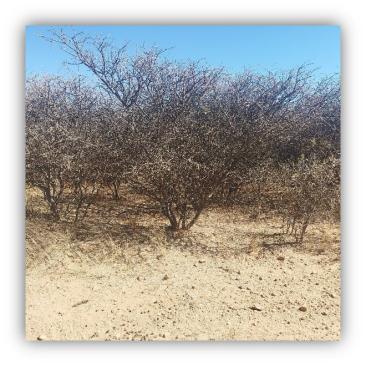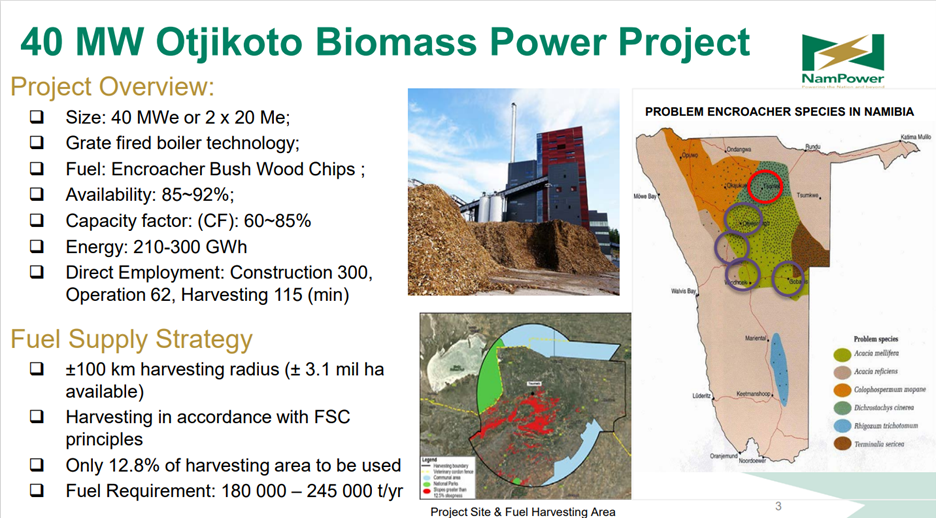
Further Opportunities to deal with Bush Encroachment in Namibia
Biomes and habitats around the world can be represented on a ‘brittleness” scale depending on the amount of moisture available to growing plants, how humidity is distributed through the seasons, and how dead vegetation breaks down. Namibia and other African countries with an arid and semi-arid climate, are high on the scale of brittleness.
Things that are brittle tend to break easily, and so it is with brittle rangelands. The economics of livestock ranching coupled with a lack of understanding of the dynamics of rangeland ecology and rangeland management led to a “break” in the savannas of central and northern Namibia (and other countries in a similar situation).
Rangelands that were previously savanna comprising sparse grassland interspersed with bush clumps, regulated by hot wild fires and free ranging wild herbivores that were relatively water independent, have been moved through a tipping point (or “broken”) by the exclusion of wild fire and the continuous grazing by water dependent cattle contained in camps.
The ecological result over several decades has been the spread of indigenous woody species previously more or less confined to bush clumps. This woody, and often thorny, vegetation shades out the grass layer and grows into dense impenetrable tickets. This “bush thickening” has been widespread in Namibia, now covering an area estimated to be up to 45 million hectares, or 50% of the land area of Namibia, including communal lands and free-hold farms.

The economic result has been the significant loss of grazing land and consequent productivity losses in the beef cattle sector, previously one of Namibia’s main economic drivers. However, human ingenuity has found ways to extract value from the encroaching and thickening bush. Harvesting the densely wooded thickets for firewood, charcoal production, biochar, wood chips, compressed fuel “bushbloks” and wood/cement fibreboard.
It is the process of sustainably harvesting the bush encroachment/thickening that has been the Forest Stewardship Council® ( FSC®)’s main interest in Namibia over several years. This form of forest management must follow the global principles of FSC to ensure that it is managed holistically – getting the best outcomes socially, environmentally and economically in ways that retain the potential for future generations.
FSC Forest Management Certification covers 1.6 million hectares in Namibia, the largest area for any southern African country. This harvesting leads to the production of up to 200 000 tonnes of FSC certified charcoal being exported to Europe and South Africa annually. Research into forms of use and into aftercare and restoration by industry players and academia is ongoing and policy development to encourage use of the bush biomass resource by all Namibians is a priority for the Department of Forestry in Windhoek.
A recent visit to Namibia launched a new phase of FSC’s activity there. Namibia’s power utility NamPower has a well advanced policy of developing alternative forms of clean energy. This has included plans to develop a series of biomass to energy plants in the area most affected by bush encroachment. The process takes wood chips that have been harvested from the bush thickening biomass and burns them to generate steam to generate electricity, in much the same way as a conventional coal-fired power station.

Courtesy Nampower
The first station at Otjikoto near Tsumeb will be a 40MW plant requiring 180 – 240 000 tonnes of fuel per year, with a designed life expectancy of 20 years and a harvesting catchment area of approximately 100km radius around Tsumeb. This requires FSC FM certification of a variety of FMUs in this area, totalling up to 3 million hectares. The fuel supply strategy uses both large scale suppliers using largely mechanised methods to provide fuel for the base load and ad-hoc suppliers that will mostly be smaller freehold, leasehold and community-based initiatives using semi mechanised and manual harvesting methods to supply extra fuel that will be chipped and stockpiled onsite to accommodate above baseload requirements.
